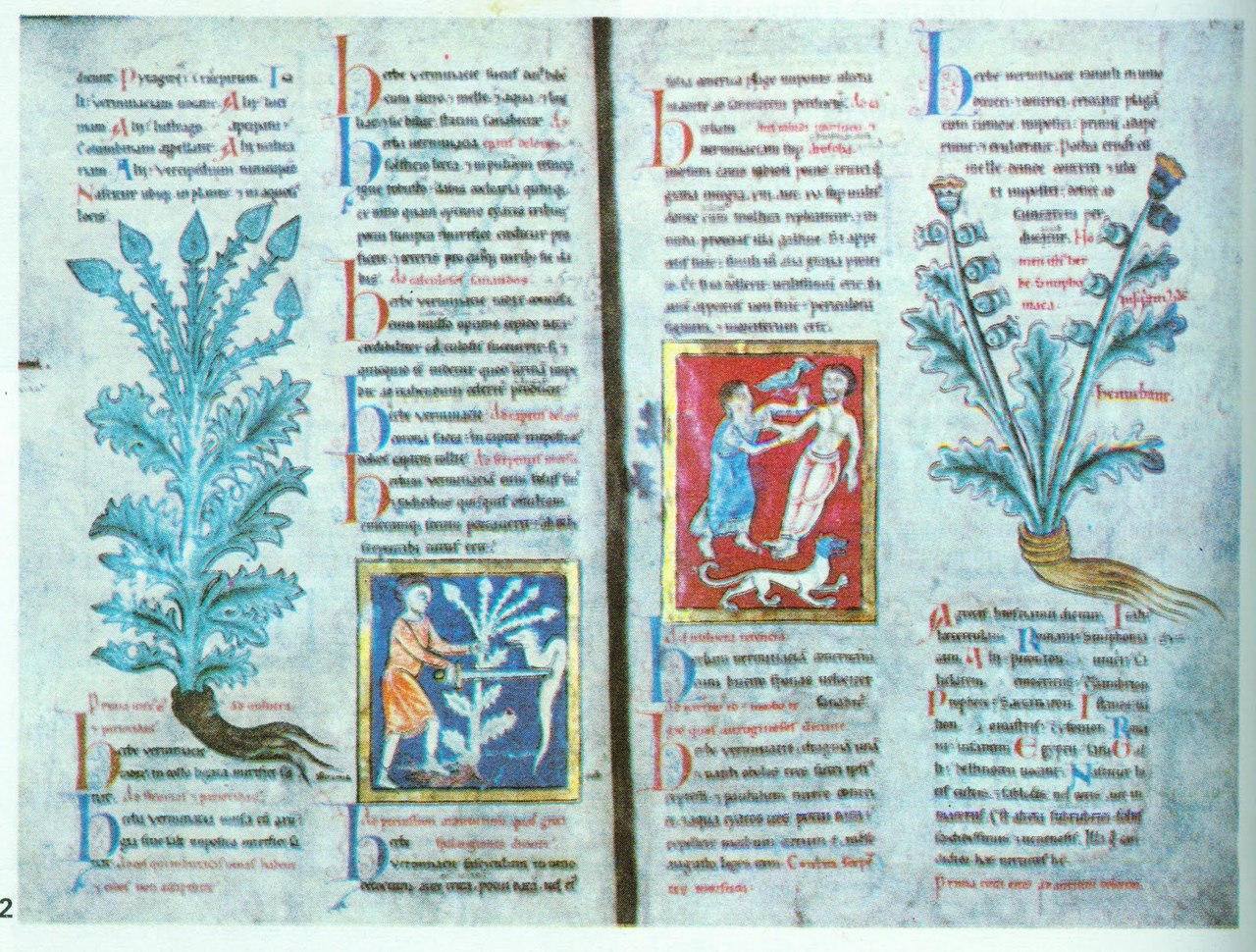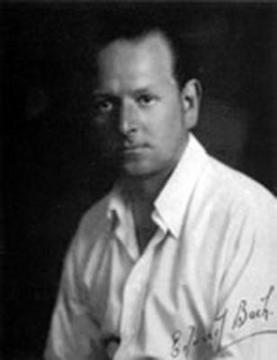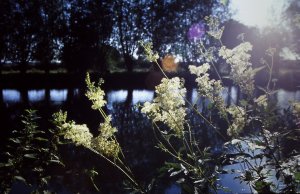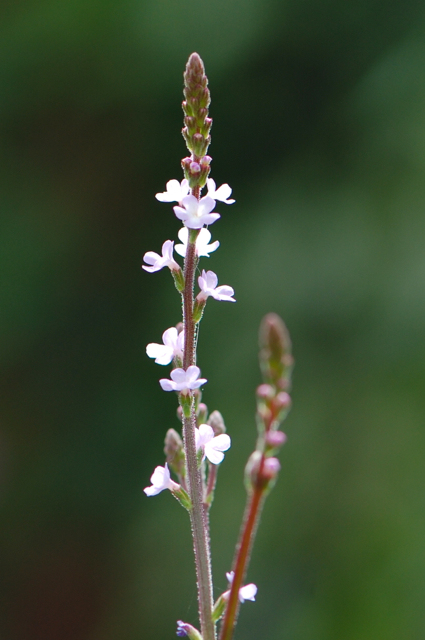 Last week I received an email from Andrea Hejlskov, a Danish writer who lives in the wild woods in Värmland, Sweden. She had read my last post and wanted to ask about the shifts I discussed. Would I contribute to a a series she was running this month about gifts on her own blog? Here is the result of our conversation. Normally acting as the Interviewer, it's a rare and wonderful thing to be asked questions, to be able to reappraise where you stand in the river of your own life. I first came across Andrea's work through a great post she wrote for Dark Mountain about living offgrid. Her book about her experiences will be published by Two Ravens Press next year.
Last week I received an email from Andrea Hejlskov, a Danish writer who lives in the wild woods in Värmland, Sweden. She had read my last post and wanted to ask about the shifts I discussed. Would I contribute to a a series she was running this month about gifts on her own blog? Here is the result of our conversation. Normally acting as the Interviewer, it's a rare and wonderful thing to be asked questions, to be able to reappraise where you stand in the river of your own life. I first came across Andrea's work through a great post she wrote for Dark Mountain about living offgrid. Her book about her experiences will be published by Two Ravens Press next year. What happened to you? Who are you now in relation to who you were when you first became an activist? Is that deep urge gone?
When I first joined the Transition movement I took part in the
Transition 2.0 initiative in Norwich, where small intentional community
and neighbourhood groups decided to cut their individual annual carbon
emissions to four tonnes (the UK average is 9 tonnes). We measured and
shared our home energy, transport and food consumption and held deep
discussions about personal carbon reduction around each others’ kitchen
tables.
I changed almost everything I did on a household level that year (2009/10), including switching off the central heating, sharing a car and only wearing second-hand clothes. I took part in reskilling sessions, building a community garden and helped set up ‘Give and Take Days’ where everyone could exchange goods for free and tons of rubbish could be diverted from landfill.
I changed almost everything I did on a household level that year (2009/10), including switching off the central heating, sharing a car and only wearing second-hand clothes. I took part in reskilling sessions, building a community garden and helped set up ‘Give and Take Days’ where everyone could exchange goods for free and tons of rubbish could be diverted from landfill.
These are things everyone can do – but it’s
far far easier to act if you are in a group and your actions are framed
within an intelligent appraisal of planetary drivers such as climate
change and resource depletion. For many of us Transition supplied that
initial frame and network. However once you have acted on the
information, you find you also need to act very differently in your
‘real’ life. In short your work and all your relationships need to embed
those changes.
My trade is in communications, so I put my experiences with my fellow Transitioners into print and pictures. The Norwich ‘Circles’ provided the material for a community blog (This Low Carbon Life) in which our stories could be shared and stored. Subsequently these became a national blog (The Social Reporting Project) and then the newspaper, Transition Free Press.
The urge to change and transform is very strong in me. I stand by the changes I made in those Transition years and the social frame in which they happened. However the cliché “you can’t change the world with the same mindset that created it” means that just altering your behaviours and engaging in your local community is not enough. Transition and other progressive movements work principally on an extrinsic mind/body axis, from what some people call a ‘left hemisphere’ perspective. For real change to happen we also need to include the feeling/spirit axis and shift our values intrinsically. We need to allow the right hemisphere to influence our walk through the world. The heart is the only part of us that can hold and cohere these different aspects of ourselves.
So in answer to your question: I guess my deep urge now lies within exploring and documenting this shift of axis. It requires a different language and a different way of interacting with people. In my own life this has meant moving my focus from Transition towards the work Dark Mountain do. Essentially away from the pragmatic towards the creative.
My heart is no longer the way it once was when I was fully immersed in a creative project or at the start of my involvement with the Transition movement, which is to say full of excitement and enthusiasm. But the heart needs to undergo radical change too. It needs to become the central governing intelligence of our lives and not be limited to the things we normally associate with it, such as passion or romantic love or inspiration.
My practice as a community activist in the last 6 years has been a social practice. This opens you in ways that you do not expect. You can’t really live a conveniently personal life once you have accessed your community self, because you are not separate from the people you live among. Here in England there is a lot of hardship and inequality and a desire to escape. Like everywhere else the land is being badly treated and we are the inheritors of a bloody history. We bear the scars of these things, and only a big medicine will turn that around.
So I find I can still celebrate the small joys of life – the light on the sea, the taste of food, daily interchanges with people and creatures – but looking at the state of the planet with true eyes needs our very adult attention. I don’t think we know what that really means yet. When I look around me I see a lot of childish and adolescent behaviour, but not much depth and integrity or fairness. So that’s what I am trying to bring into everything I do. The heart desires equality of exchange. It is exacting in these matters. You need to get back as much as you give. Making those demands for yourself, for the people, for the land, requires you to be a tough negotiator in a hostile culture that is used to giving nothing in return.
I think the heart changes its function as you get older (I am 58). So it doesn’t pound in the way you felt it pound when you loved the boy in the next room, or the words you once wrote for a glossy magazine. One day you wake up and realise that not only can you not go to nightclubs any more, you can’t keep flying to other countries either, or eating fish, or thinking you are special, and that’s a sobering thing.
Our civilised lives are off kilter and we are not at home or in time. The sober heart straightens this out from the inside and changes the way you walk through the world. It teaches you to make yourself at home and how to live in time. So perhaps it would be fair to say a pounding heart, an excited, upbeat heart, the kinds of feeling and kinship I originally felt when I joined my Transition initiatives, do not create the best state with which to face the future. You have to meet it on its own terms. And that’s not been done before by a post-industrialised people.
For me the people who know how to live with that kind of challenge, with uncertainty, who can provide beauty and depth and meaning, who can regenerate and remember the world, are my fellow artists and writers.
Creativity is the best gift we can give – and the best any of us can receive”.
Images: illustration from Andrea Hejlskov’s book Og Den Store Flugt by Danish artist Signe Kjær; Sustainable Bungay Give and Take Day crew, 2010; holding russet apple grafts for community orchard from This Low Carbon Life; Waylands Smithy, Oxfordshire; reading Dark Mountain 4; Winter solstice sun, Suffolk (all photographs by Mark Watson)
My trade is in communications, so I put my experiences with my fellow Transitioners into print and pictures. The Norwich ‘Circles’ provided the material for a community blog (This Low Carbon Life) in which our stories could be shared and stored. Subsequently these became a national blog (The Social Reporting Project) and then the newspaper, Transition Free Press.
The urge to change and transform is very strong in me. I stand by the changes I made in those Transition years and the social frame in which they happened. However the cliché “you can’t change the world with the same mindset that created it” means that just altering your behaviours and engaging in your local community is not enough. Transition and other progressive movements work principally on an extrinsic mind/body axis, from what some people call a ‘left hemisphere’ perspective. For real change to happen we also need to include the feeling/spirit axis and shift our values intrinsically. We need to allow the right hemisphere to influence our walk through the world. The heart is the only part of us that can hold and cohere these different aspects of ourselves.
So in answer to your question: I guess my deep urge now lies within exploring and documenting this shift of axis. It requires a different language and a different way of interacting with people. In my own life this has meant moving my focus from Transition towards the work Dark Mountain do. Essentially away from the pragmatic towards the creative.
What are you feelings about change now?
I feel our human blueprint is to undergo change through time. We are natural transformers in the same way mushrooms or bacteria activate and change other substances by their presence. All archaic and indigenous cultures celebrate these processes through their art and song and spiritual practice. We live however in a civilisation that prevents these kind of change from happening. People in industrialised culture are trained to be workers and consumers and act according to ‘fairytales’ told them by their education and media. We have become functions in an artificial system, not natural symbionts with the Earth.
So change always upsets the ‘stability’ of this known world. It exposes the reality underneath the dysfunctional narratives of our civilisation. Most people don’t want to look at the full implications of what they do every day without thinking. Not because they are mean, but because they instinctively fear the consequences. When you let go of that unnatural cramped position you have been holding for years, there is a lot of pain and anger and bewilderment to deal with and very little to guide you. Changing your shopping habits is the least of it.
Radical change is far more demanding than either modern spirituality or community activism make space for, partly because there are feedback loops to cope with. There is no way to jump this suffering but there are a lot of ways of making it easier to bear. Sharing them with fellow Transitioners is one way. Turning them into creative material is another. However we have to weather this process because we need to become a different people, people who can live in synch with the Earth and each other. That’s an outer and an inner thing. It’s personal and it’s planetary. And it is also political.
One of the reasons Naomi Klein in This Changes Everything says institutions deny climate change is because they know that you can’t act on climate without radically altering the whole system, without acting on capitalism, without bringing in social and environmental justice.
That’s the same for individuals. When you change one thing, you end up changing everything. The systems are interlocked.
I feel our human blueprint is to undergo change through time. We are natural transformers in the same way mushrooms or bacteria activate and change other substances by their presence. All archaic and indigenous cultures celebrate these processes through their art and song and spiritual practice. We live however in a civilisation that prevents these kind of change from happening. People in industrialised culture are trained to be workers and consumers and act according to ‘fairytales’ told them by their education and media. We have become functions in an artificial system, not natural symbionts with the Earth.
So change always upsets the ‘stability’ of this known world. It exposes the reality underneath the dysfunctional narratives of our civilisation. Most people don’t want to look at the full implications of what they do every day without thinking. Not because they are mean, but because they instinctively fear the consequences. When you let go of that unnatural cramped position you have been holding for years, there is a lot of pain and anger and bewilderment to deal with and very little to guide you. Changing your shopping habits is the least of it.
Radical change is far more demanding than either modern spirituality or community activism make space for, partly because there are feedback loops to cope with. There is no way to jump this suffering but there are a lot of ways of making it easier to bear. Sharing them with fellow Transitioners is one way. Turning them into creative material is another. However we have to weather this process because we need to become a different people, people who can live in synch with the Earth and each other. That’s an outer and an inner thing. It’s personal and it’s planetary. And it is also political.
One of the reasons Naomi Klein in This Changes Everything says institutions deny climate change is because they know that you can’t act on climate without radically altering the whole system, without acting on capitalism, without bringing in social and environmental justice.
That’s the same for individuals. When you change one thing, you end up changing everything. The systems are interlocked.
How do you celebrate Christmas? What does this season mean to you?
What happens to you around Christmas? What do you wish for it to be? Do
you have New Year's resolutions?
I don’t think I’ve ever made a resolution! I gave up Christmas in my 20s (way too much family arguing!) and went travelling with my friends instead. I never looked back. However I do celebrate the winter solstice. In the Celtic tradition there was a time either side of the solstice called the Halcyon Days, after the mythic kingfisher who builds her nest at this time. And so I keep those 14 days as free as possible and tune into the world outside my door: the weather and light, the frost and trees, to keep an ear out for the moment the birds start to sing again. I usually do most of the pruning of the apple trees and hedges at this time (by hand!) and so am outside in all weathers. I love the winter twilight, chopping the firewood, watching the stars come out. It’s easy to forget those things when you are indoors or working.
We (that’s with my partner and colleague Mark Watson) mark all the eight stations of the year, the solstices and equinoxes and feast days. We light a new fire at night and watch the sun rise the next morning from under the neighbourhood oak. or by the sea. Usually I go for a long walk through the land, or visit our local tumuli. It’s about paying a certain attention at these times. They are all doors that usher in another season and make sense of the relationship between the sun and the Earth that plays out in the growing year and in the larger cycles of life. They help keep us on track and rooted in time and place.
I know you lost heart as an activist. Is your heart back? What makes your heart pound now?I don’t think I’ve ever made a resolution! I gave up Christmas in my 20s (way too much family arguing!) and went travelling with my friends instead. I never looked back. However I do celebrate the winter solstice. In the Celtic tradition there was a time either side of the solstice called the Halcyon Days, after the mythic kingfisher who builds her nest at this time. And so I keep those 14 days as free as possible and tune into the world outside my door: the weather and light, the frost and trees, to keep an ear out for the moment the birds start to sing again. I usually do most of the pruning of the apple trees and hedges at this time (by hand!) and so am outside in all weathers. I love the winter twilight, chopping the firewood, watching the stars come out. It’s easy to forget those things when you are indoors or working.
We (that’s with my partner and colleague Mark Watson) mark all the eight stations of the year, the solstices and equinoxes and feast days. We light a new fire at night and watch the sun rise the next morning from under the neighbourhood oak. or by the sea. Usually I go for a long walk through the land, or visit our local tumuli. It’s about paying a certain attention at these times. They are all doors that usher in another season and make sense of the relationship between the sun and the Earth that plays out in the growing year and in the larger cycles of life. They help keep us on track and rooted in time and place.
My heart is no longer the way it once was when I was fully immersed in a creative project or at the start of my involvement with the Transition movement, which is to say full of excitement and enthusiasm. But the heart needs to undergo radical change too. It needs to become the central governing intelligence of our lives and not be limited to the things we normally associate with it, such as passion or romantic love or inspiration.
My practice as a community activist in the last 6 years has been a social practice. This opens you in ways that you do not expect. You can’t really live a conveniently personal life once you have accessed your community self, because you are not separate from the people you live among. Here in England there is a lot of hardship and inequality and a desire to escape. Like everywhere else the land is being badly treated and we are the inheritors of a bloody history. We bear the scars of these things, and only a big medicine will turn that around.
So I find I can still celebrate the small joys of life – the light on the sea, the taste of food, daily interchanges with people and creatures – but looking at the state of the planet with true eyes needs our very adult attention. I don’t think we know what that really means yet. When I look around me I see a lot of childish and adolescent behaviour, but not much depth and integrity or fairness. So that’s what I am trying to bring into everything I do. The heart desires equality of exchange. It is exacting in these matters. You need to get back as much as you give. Making those demands for yourself, for the people, for the land, requires you to be a tough negotiator in a hostile culture that is used to giving nothing in return.
I think the heart changes its function as you get older (I am 58). So it doesn’t pound in the way you felt it pound when you loved the boy in the next room, or the words you once wrote for a glossy magazine. One day you wake up and realise that not only can you not go to nightclubs any more, you can’t keep flying to other countries either, or eating fish, or thinking you are special, and that’s a sobering thing.
Our civilised lives are off kilter and we are not at home or in time. The sober heart straightens this out from the inside and changes the way you walk through the world. It teaches you to make yourself at home and how to live in time. So perhaps it would be fair to say a pounding heart, an excited, upbeat heart, the kinds of feeling and kinship I originally felt when I joined my Transition initiatives, do not create the best state with which to face the future. You have to meet it on its own terms. And that’s not been done before by a post-industrialised people.
For me the people who know how to live with that kind of challenge, with uncertainty, who can provide beauty and depth and meaning, who can regenerate and remember the world, are my fellow artists and writers.
Creativity is the best gift we can give – and the best any of us can receive”.
Images: illustration from Andrea Hejlskov’s book Og Den Store Flugt by Danish artist Signe Kjær; Sustainable Bungay Give and Take Day crew, 2010; holding russet apple grafts for community orchard from This Low Carbon Life; Waylands Smithy, Oxfordshire; reading Dark Mountain 4; Winter solstice sun, Suffolk (all photographs by Mark Watson)











































 Dark Mountain: Issue 20 - ABYSS is available
Dark Mountain: Issue 20 - ABYSS is available 